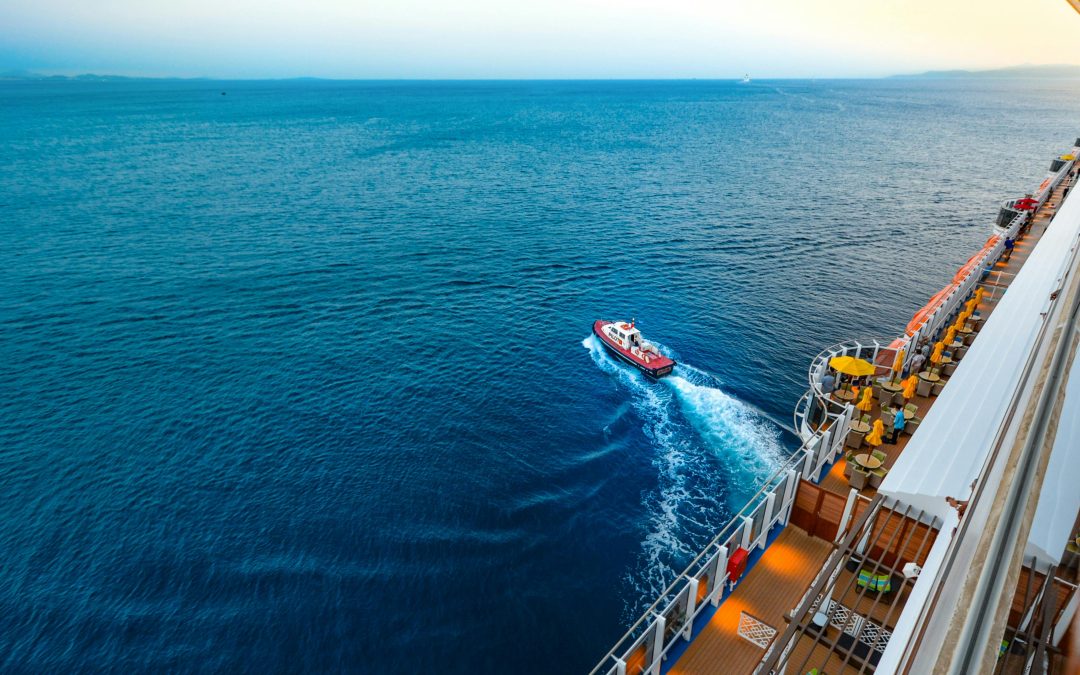In normal times, the workings of the global supply chain are invisible and unnoticed by consumers. That changed with the COVID-19 pandemic, which was followed by disruptions along the supply chain and resulted in shortages of goods and rising prices for consumers around the world.
The pandemic and subsequent shocks—terrorist attacks on shipping in the Red Sea, drought at the Panama Canal—highlighted the need for ways to measure supply-chain disruptions as a tool to understand their impact. That was the motivation for developing the World Bank’s Global Supply Chain Stress Index, which has been made available as an interactive dashboard.
The stress index measures the additional capacity needed to carry goods when container ships are stalled by port congestion or shutdowns or when they must be rerouted. Stress occurs when the time it takes container ships to traverse any given route exceeds the historical average for that route. For example, because of attacks on shipping in the Red Sea, major freight carriers rerouted vessels around Africa, adding up to 6,500 kilometers and 10 days to a typical journey between Europe and Asia. Stress is measured in 20-foot equivalent units (TEUs).
The index is updated monthly using data from the Automatic Identification System (AIS), which tracks the location of ships across the globe in real time. Only vessels of Panamax size or larger, which form the backbone of global trade, are included. Estimates are made at the port level and then aggregated at the country, regional, and global levels.
The World Bank’s Global Supply Chain Stress index offers insights into the ways that disruptions affect firms and consumers. Consider the connection between economic stress and the shipping rate, which skyrocketed in 2021-22. The index shows that an additional 1 million TEUs in stress drives up the Shanghai Containerized Freight Index—a widely used benchmark of spot prices—by US$2,300 per TEU.
How does that happen? Under normal circumstances, shipping lines compete to deliver services, with low rates aligning closely with the cost of operating vessels (also known as marginal cost.) Conversely, during periods of capacity stress, it’s the shippers who compete for increasingly scarce shipping slots, and their willingness to pay increases based on the value of goods in a container.
The World Bank is not alone in efforts to track supply-chain disruptions. For example, Portwatch, a platform developed by the International Monetary Fund and the University of Oxford, offers a real-time visualization of shipping trends along with online tools that simulate potential indirect spillover effects of port-level disturbances.
The Federal Reserve Bank of New York publishes the Supply Chain Pressure Index. Unlike the World Bank’s index, which is based on ship-level data, the Fed’s index aggregates other indicators such as the Baltic Exchange Dry Index of bulk freight rates and S&P Global’s Purchasing Managers Index.
Monthly stress indicators are distinct from performance metrics such as the World Bank’s yearly Logistics Performance Index or the Container Port Performance Index, which assess structural performance like container terminal productivity or customs-clearance time under normal circumstances. A key question is: Do high-performing port-clearance systems hasten a recovery more quickly from supply-chain disruptions, enhancing resilience? While policymakers often assume there is a connection, empirical evidence is lacking. Bridging stress and performance data could help answer this question.
GSCSI—Questions and Answers
What is the Global Supply Chain Stress Index?
The index is a measure of the container shipping capacity that is tied up when ports are congested or closed or when vessels must be rerouted. It is expressed in millions of 20-foot equivalent units (TEUs).
Why is it important?
The COVID-19 pandemic and subsequent shocks—such as terrorist attacks on shipping in the Red Sea and drought at the Panama Canal—highlighted the need for ways to measure supply-chain disruptions as a tool to analyze their economic impact.
How is the index calculated?
The index uses data from the Automatic Identification System (AIS), which tracks the location of ships across the globe in real time. Stress occurs when the time it takes container ships to traverse any given route exceeds the historical average for that route. Estimates are made at the port level and then aggregated at the country, regional, and global levels.
What kinds of shipping does the index cover?
The index covers container vessels of Panamax-size or larger, which constitute the backbone of global maritime trade. It doesn’t include bulk shipping of commodities or tanker shipping.
How does the World Bank index differ from the Federal Reserve Bank of New York’s Supply Chain Pressure Index?
The World Bank’s index is based on ship-level data. The New York Fed’s index is a meta indicator. It aggregates other indicators such as the Baltic Exchange Dry Index of bulk freight rates and S&P Global’s Purchasing Managers Index.
What is the link between supply chain stress and freight rates?
The World Bank’s Global Supply Chain Stress Index shows that an additional 1 million TEUs in stress is associated with an increase of US$2,300 per TEU in the Shanghai Containerized Freight Index—a widely used benchmark of spot prices.
How often is the index updated?
The index is updated in the first half of each month.
Source: World Bank






